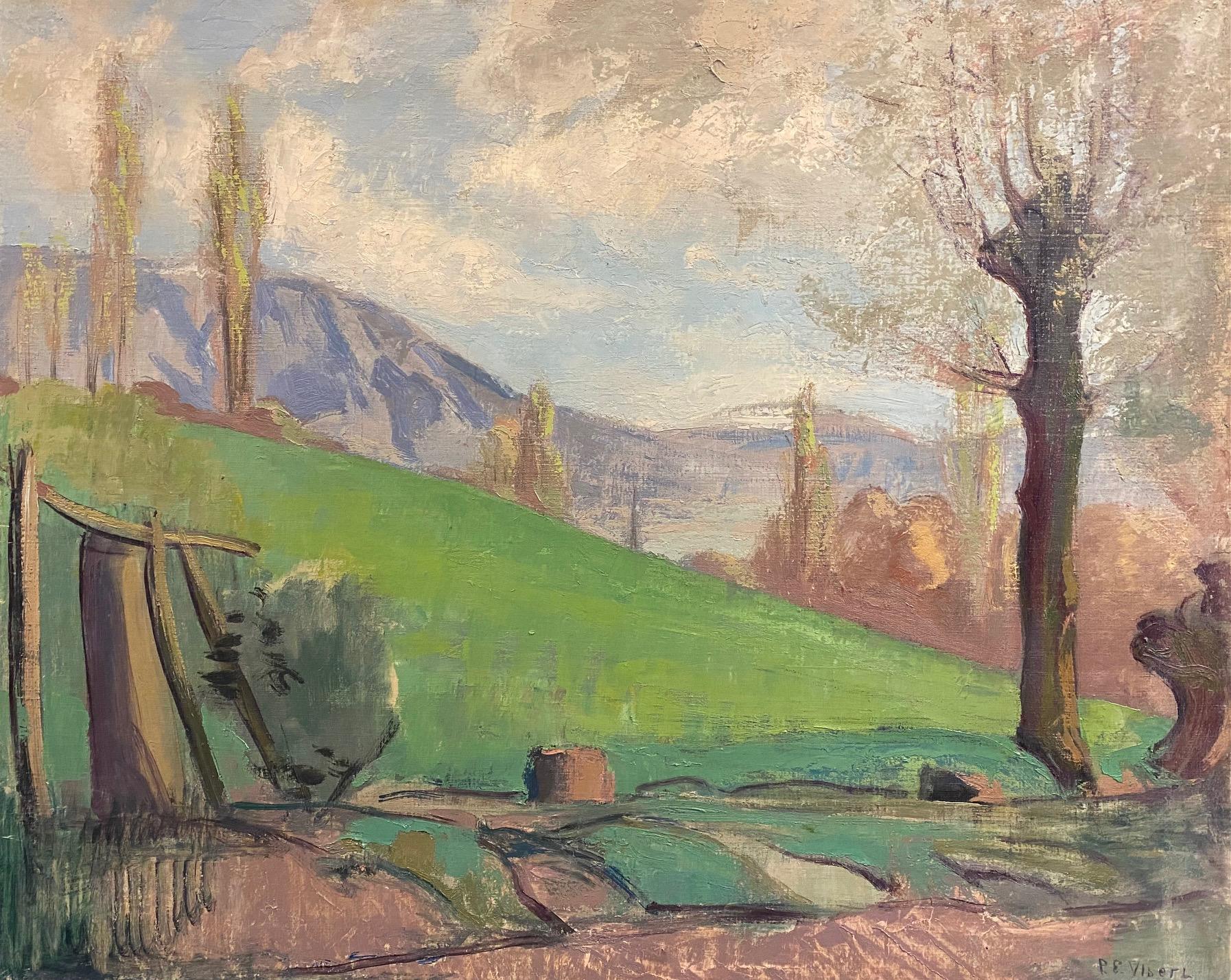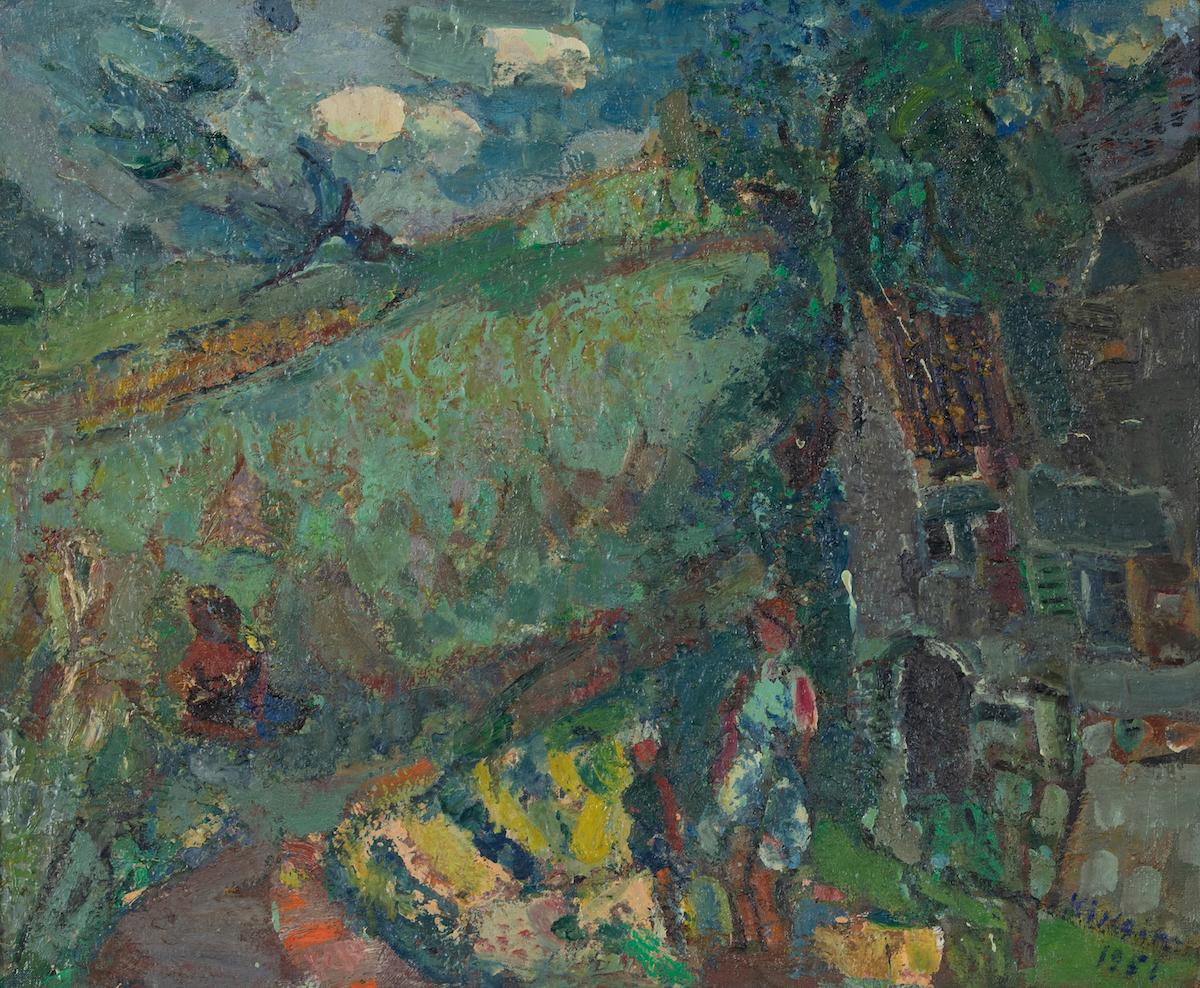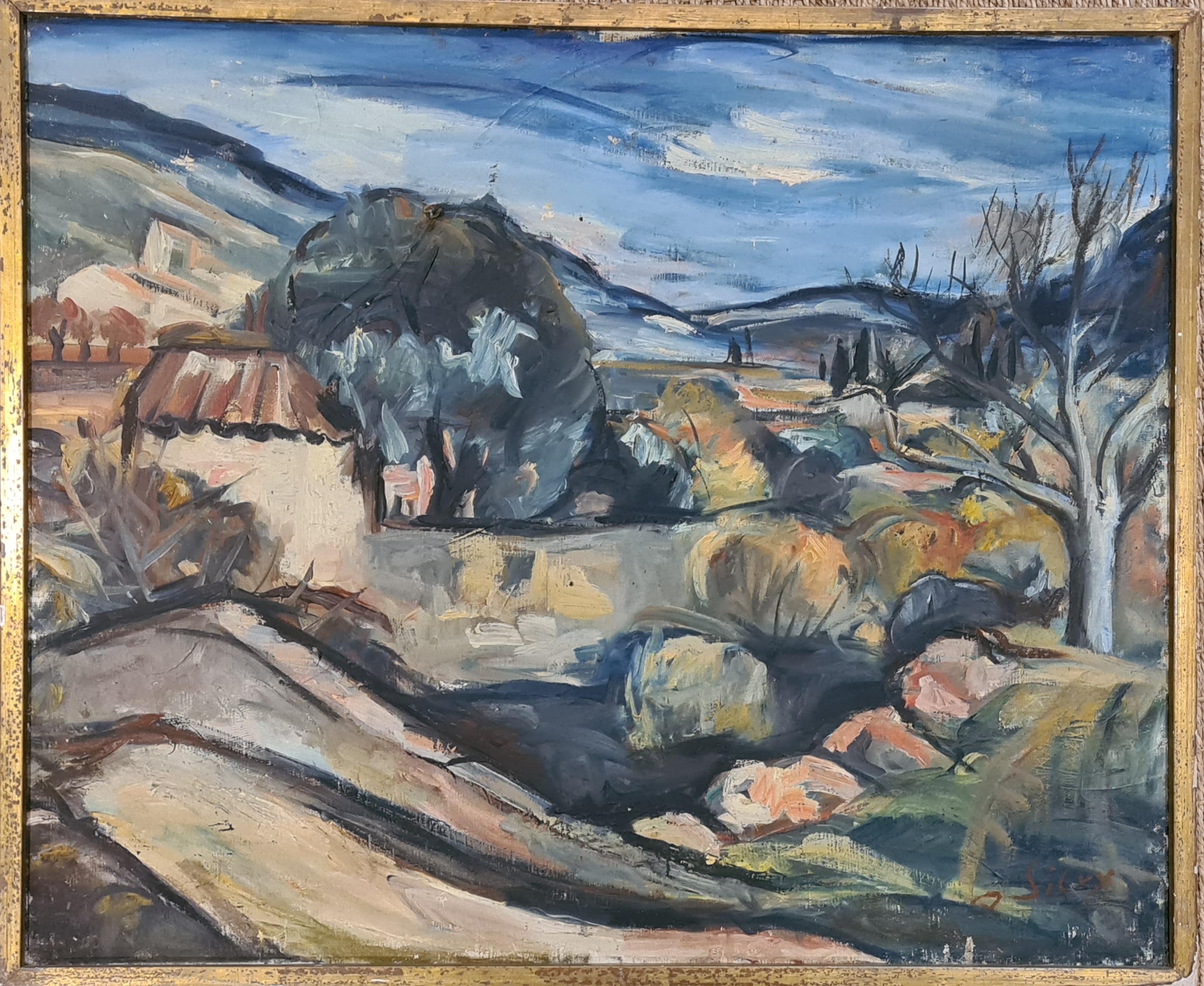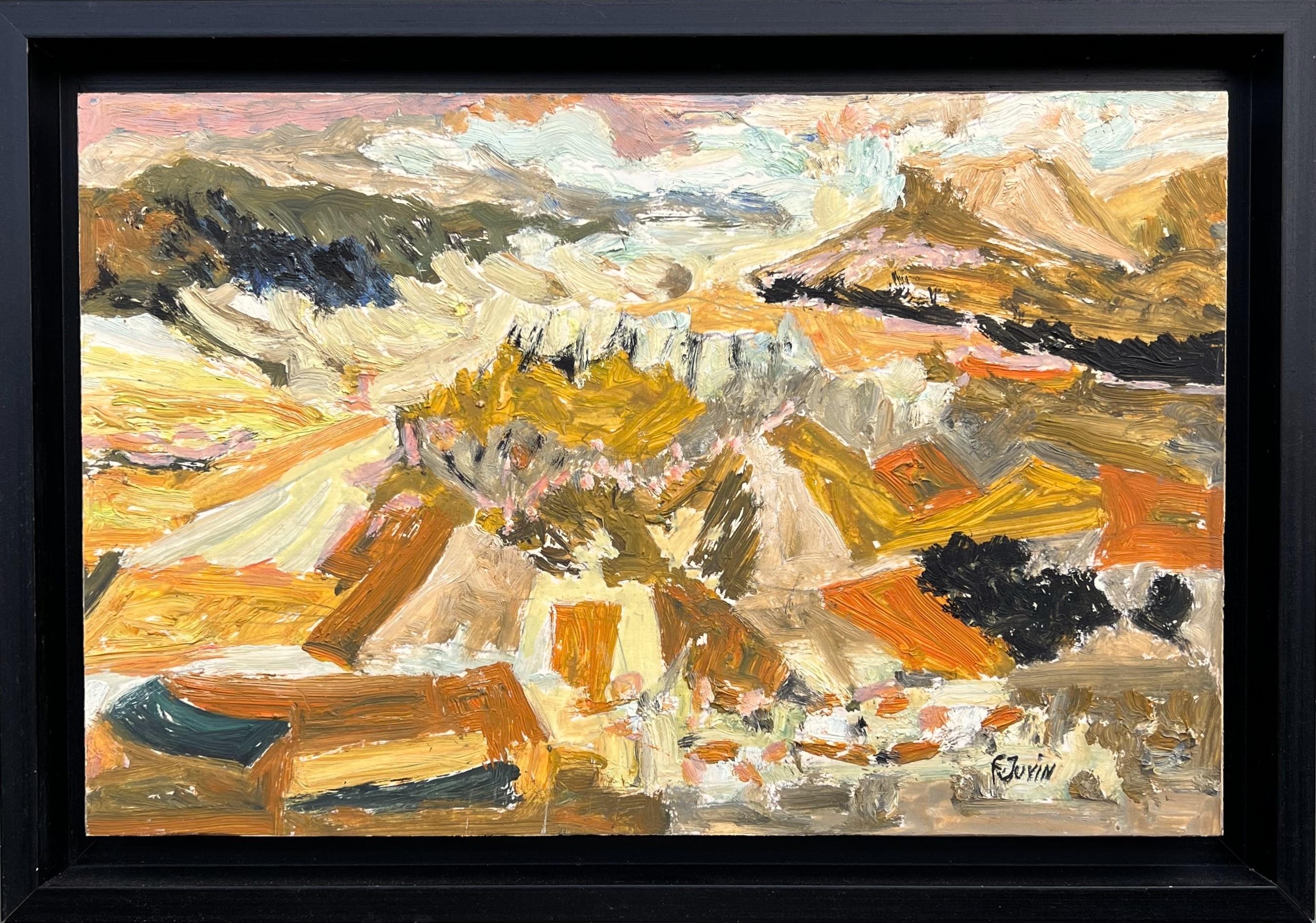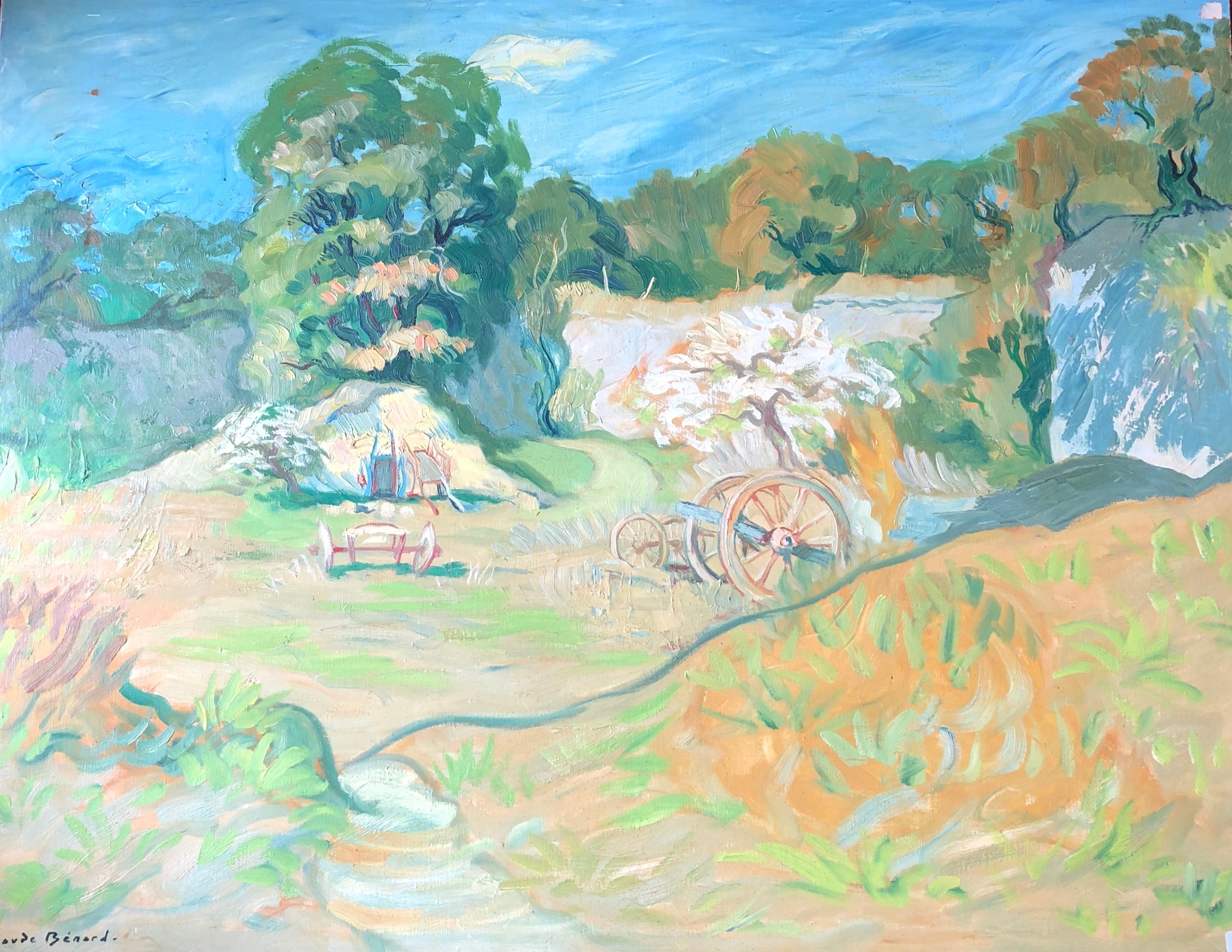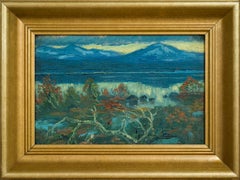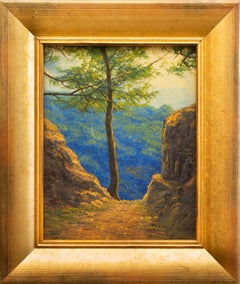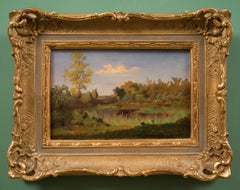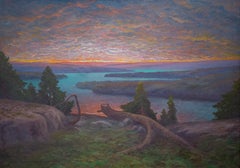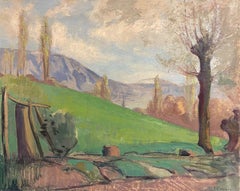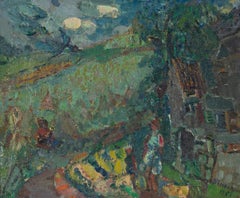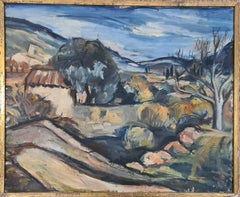Items Similar to French Landscape by Philippe Marie Picard, Oil on Canvas, Signed, Dated -46
Video Loading
Want more images or videos?
Request additional images or videos from the seller
1 of 10
Philippe Marie Rene PicardFrench Landscape by Philippe Marie Picard, Oil on Canvas, Signed, Dated -461946
1946
$1,740
$2,90040% Off
£1,320.43
£2,200.7240% Off
€1,512.01
€2,520.0140% Off
CA$2,472.66
CA$4,121.1040% Off
A$2,691.19
A$4,485.3240% Off
CHF 1,412.85
CHF 2,354.7540% Off
MX$32,513.52
MX$54,189.2040% Off
NOK 17,732.84
NOK 29,554.7440% Off
SEK 16,719.97
SEK 27,866.6240% Off
DKK 11,286.98
DKK 18,811.6440% Off
About the Item
Philippe Marie Picard (1915-1997) French
French Landscape
oil on canvas
signed Ph m Picard
dated a tergo 16.4 -46
canvas size 12.99 x 22.04 inches (33 x 56 cm )
frame 23.03 x 31.49 inches (58.5 x 80 cm)
Provenance:
A Swedish private collection.
The Artist:
The year was 1915, and Philippe Marie was born in the small village of Neuvy-le-Roi in France. His parents were Albert Picard and Marie Lehoux; he had a total of six siblings. After studying at the Lycée Descartes in Tours, he entered the studio of the artist François Sicard. He was then accepted to the École supérieure des beaux-arts de Tours from 1932 to 1934, where he was a pupil of Maurice Mathurin. In 1935, he entered the School of Fine Arts in Paris, then in 1936-1938 the studio of Fernand Sabatté, and finally Charles-François-Prosper Guérin studio.
Phillippe Marie exhibited at the Salon des Indépendants 1945, where the city of Paris bought the first painting.
He then exhibited regularly at the Salon des Indépendants until 1989. In 1946 when this painting was created, he exhibited for the first time in Stockholm. At the end of the same year, he was noticed by Youki Desnos and exhibit at the Fontan gallery in Paris. In 1947 and 1948, he participated in a group exhibition at the Marquié Gallery in New York under the title: School of Paris - Paintings with Eugène Boudin , Jean-Baptiste Corot , Braque , Andre Lhote , Élisée Maclet , Camille Pissarro and Henri Rousseau. He travelled to Sweden from October to November 1949. It will be his only trip abroad. Subsequently, he made several important exhibitions in Sweden. He continues to exhibit in Sweden, Germany, Switzerland, Venezuela, Lebanon, Spain, Mexico, Montreal.
In the 1940s, Picard painted realistic portraits, still lifes, and landscapes; he experimented with black lines in his paintings. In the 1950s, his art became more expressionist. Around 1970, he turned to a semi-abstraction and later to Fauvism.
- Creator:Philippe Marie Rene Picard (1915 - 1997, French)
- Creation Year:1946
- Dimensions:Height: 13 in (33 cm)Width: 22.05 in (56 cm)
- Medium:
- Period:
- Condition:Fine condition, clear and bright colours. Cleaned in 2021. The frame needs to be renovated to be in perfect condition.
- Gallery Location:Stockholm, SE
- Reference Number:1stDibs: LU144528576902
About the Seller
5.0
Platinum Seller
Premium sellers with a 4.7+ rating and 24-hour response times
Established in 2020
1stDibs seller since 2020
200 sales on 1stDibs
Typical response time: <1 hour
Associations
International Confederation of Art and Antique Dealers' Associations
- ShippingRetrieving quote...Shipping from: Stockholm, Sweden
- Return Policy
Authenticity Guarantee
In the unlikely event there’s an issue with an item’s authenticity, contact us within 1 year for a full refund. DetailsMoney-Back Guarantee
If your item is not as described, is damaged in transit, or does not arrive, contact us within 7 days for a full refund. Details24-Hour Cancellation
You have a 24-hour grace period in which to reconsider your purchase, with no questions asked.Vetted Professional Sellers
Our world-class sellers must adhere to strict standards for service and quality, maintaining the integrity of our listings.Price-Match Guarantee
If you find that a seller listed the same item for a lower price elsewhere, we’ll match it.Trusted Global Delivery
Our best-in-class carrier network provides specialized shipping options worldwide, including custom delivery.More From This Seller
View AllMountain Landscape with Lake
Located in Stockholm, SE
Swedish Mountain Landscape with Lake
oil on canvas laid on masonite
18 x 27 cm (7 1/8 x 10 5/8 in)
28 x 37 cm (11 x 14 5/8 in)
Provenance:
Acquired...
Category
1910s Post-Impressionist Landscape Paintings
Materials
Canvas, Oil, Board
A Beautiful View at the End of the Road, c. 1940-50, Oil Painting on Canvas
Located in Stockholm, SE
A very beautiful landscape painting by a yet unknown artist signed H.Lövström.
The colours are strong and the three-dimensionality is impressive...
Category
1940s Naturalistic Landscape Paintings
Materials
Canvas, Oil
Impressions of Nature: After Rousseau
By Théodore Rousseau
Located in Stockholm, SE
This charming landscape painting, clearly influenced by the style of the French artist Théodore Rousseau, captures the tranquil beauty of nature with an emphasis on detail and atmosp...
Category
Late 19th Century Naturalistic Landscape Paintings
Materials
Canvas, Paper, Oil
A Scandinavian Landscape View by Swedish Artist Oscar Lycke, Large Size Painting
Located in Stockholm, SE
Oscar Lycke was a Swedish artist from Sundsvall. He is best known for his impressive colourful landscape paintings in a national romantic and realism styl...
Category
1920s Romantic Landscape Paintings
Materials
Canvas, Oil
$3,322 Sale Price
25% Off
Original Oil Study by Racksta Group Artist Gustaf Fjaestad. Title Study of Tufts
Located in Stockholm, SE
Gustaf Fjaestad (Fjæstad) (1868-1948) Sweden
Study of Tufts
signed "G. A. Fjaestad," both recto and verso.
oil on artist's sketching board (Wilhelm Becker, Stockholm)
unframed 32.7...
Category
Early 1900s Post-Impressionist Landscape Paintings
Materials
Oil, Board
Post-Impressionistic Painting From Saint Cloud, Paris, 1912 by Dick Beer
Located in Stockholm, SE
Dick Beer (b. London 1893 - d. Stockholm 1938)
Saint Cloud, 1912
oil on board
board dimensions 40.5 x 32.5 cm
frame 51.5 x 43.5 cm
signed Dick Beer
painted 1912
Exhibited:
The Swedish-French Art Gallery, Memorial Exhibition, Catalog nr 5, 1942
Provenance:
A private collection, Sweden
Dick Beer (1893-1938)
Dick Beer was born in London in 1893. His father, John Beer (1853-1906), was a Swedish painter from Stockholm who had a career mainly as a watercolour painter with motifs of horses from racetracks and fox hunts from the countryside.
Barely fifteen years old, Dick Beer became an orphan and came to Sweden in 1907. Already in 1908-1909, he started at Althin's painting school in Stockholm. And later, at the Royal Academy of Arts from 1910-1912. His teachers were, among others, Gustaf Cederström, Oscar Björk and Alfred Bergström...
Category
1910s Post-Impressionist Landscape Paintings
Materials
Oil, Board
You May Also Like
Landscape by Pierre Eugène Vibert - Oil on canvas 60x73 cm
Located in Geneva, CH
Work on canvas without frame
Painter, illustrator born in 1875 in Geneva - Died in 1937
Category
Early 1900s Modern Landscape Paintings
Materials
Oil
$1,080 Sale Price
20% Off
Paysage d'Annay-sur-Serein by Michel Kikoïne - Landscape painting
By Michel Kikoïne
Located in London, GB
*UK BUYERS WILL PAY AN ADDITIONAL 5% IMPORT DUTY ON TOP OF THE ABOVE PRICE
Paysage d'Annay-sur-Serein by Michel Kikoïne (1892-1968)
Oil on canvas
54 x ...
Category
1950s Landscape Paintings
Materials
Oil, Canvas
French landscape oil on canvas painting France
By Pedro Creixams
Located in Sitges, Barcelona
Technical Sheet
Title of the Work: Château de la Madeleine: Rural Idyll
Artist: Pedro Creixams
Dimensions: 18.1 x 21.7 inches
Technique: Oil on canvas
Frame: Unframed
Year...
Category
1930s Expressionist Landscape Paintings
Materials
Canvas, Oil
Mid Century Expressionist Rural Landscape, The Bastide at Signes, Oil on Canvas
Located in Cotignac, FR
French Mid Century Expressionist oil on canvas Provencal landscape of Signes, South of France, by Olympe Silvy. Signed bottom right, annotated, titled and dated to the back stretcher...
Category
Mid-20th Century Landscape Paintings
Materials
Oil, Canvas
Autumn Landscape, oil painting by Françoise Juvin
Located in Montfort l’Amaury, FR
Françoise Juvin - Autumn Landscape
Reference number FJ16
Framed with an black color wooden floated frame.
23,5 x 34 cm frame included (18 x 26 cm without frame)
This work is painted with oil on a paper that is mounted on a board and placed in a made to measure wood strectcher. It is signed in the bottom right.
Françoise Juvin (1927-2010) is a French artist born in Nancy. She entered the Ecole des Beaux-Arts in Lyon in 1941 where she met several artists such as Jacques Truphémus...
Category
1980s French School Landscape Paintings
Materials
Oil
$1,340 Sale Price
20% Off
French Post-Impressionist Farm Landscape Signed Oil Painting
By Claude Benard
Located in Cirencester, Gloucestershire
Farm Landscape, Signed Oil Painting
By French artist Claude Benard, (1926 - 2016)
Signed by the artist on the lower left hand corner,
Oil painting on canvas, unframed
canvas size: 31...
Category
Mid-20th Century Post-Impressionist Landscape Paintings
Materials
Oil
More Ways To Browse
Marie France
Picard Vintage
Philippe Signed Paintings
Philippe Marie Rene Picard On Sale
Giuseppe Zais
Granada Painting
Henry Hillingford Parker
Henry Moret
Henry Tukes
Herbert Theurillat
Impasto Trees Oil
Items Owned By Jackie Kennedy
J Henderson
James Jahrsdoerfer
John Noble
John Richard Framed
Kathleen Crow
Ken Bright
